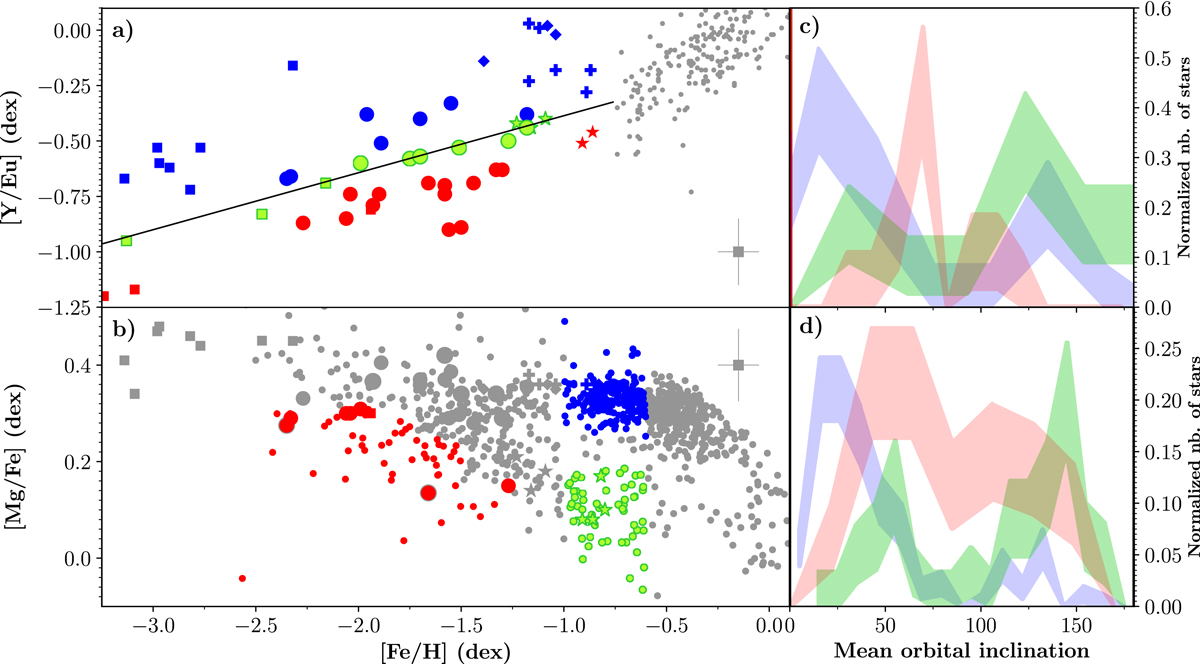Fig. 5.

Analysis of correlations between chemical abundances and orbital inclination. Panel a: yttrium abundance with respect to europium as a function of iron abundance for Milky Way globular clusters (large circles) and field stars (squares for a metal-poor sample (Roederer et al. 2014), diamonds, stars, and crosses for an intermediate-metallicity compilation (Fishlock et al. 2017) of high [Mg/Fe], low [Mg/Fe] and thick disc stars, respectively). The colour code is based on the [Y/Eu] departures from the standard value (black line). Panel b: [Mg/Fe] abundance ratio with respect to iron for the previous objects, when available, and a compilation of high transversal velocity stars from APOGEE. The colour code selects groups with different [Mg/Fe] turnovers (thus parent system masses). Panels c, d: distributions of orbital inclinations for the groups selected with the [Y/Eu] and [Mg/Fe] criteria, respectively.
Current usage metrics show cumulative count of Article Views (full-text article views including HTML views, PDF and ePub downloads, according to the available data) and Abstracts Views on Vision4Press platform.
Data correspond to usage on the plateform after 2015. The current usage metrics is available 48-96 hours after online publication and is updated daily on week days.
Initial download of the metrics may take a while.


